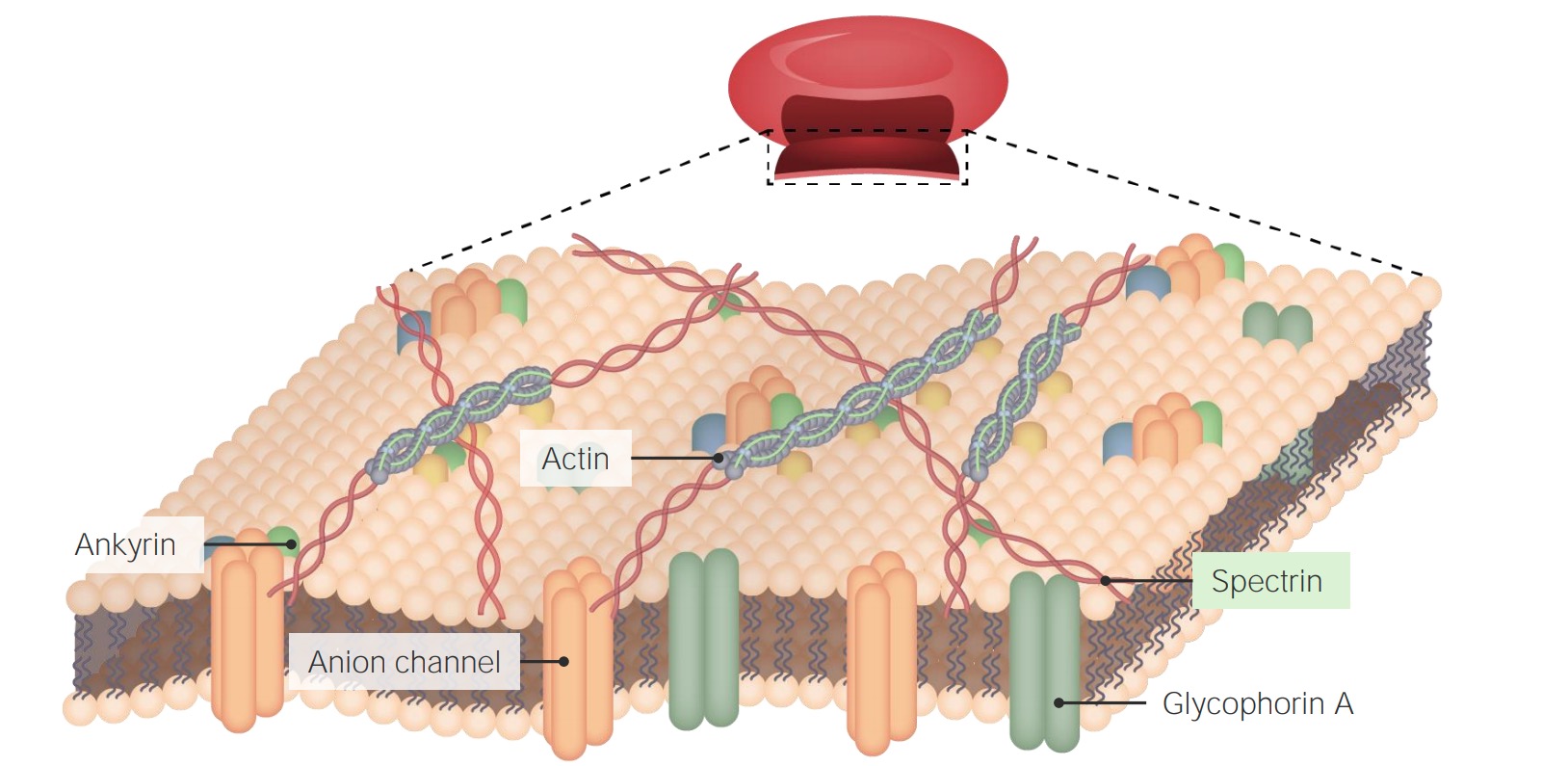Playlist
Show Playlist
Hide Playlist
Movement of Large Molecules Across Membranes: Exocytosis
-
Slides Cellular Pathology - Movement across Membranes.pdf
-
Reference List Pathology.pdf
-
Download Lecture Overview
00:01 So, that's things coming into the cell. 00:03 Let's talk about moving things out of the cell or exocytosis. 00:07 Clearly, it's not a one-way streak. 00:10 We also need to move things out. 00:11 So, what we're shown here on the left-hand side of the line showing exocytosis is the Golgi complex packaging up a set of proteins in a membrane that are going to be destined for export to the outside world. 00:27 Those are put into vesicles, translocated to the membrane, there, and then, they are released into the outside space. 00:37 What is shown on that panel is a constitutive secretion. 00:42 This happens constantly. 00:45 So, cells like the liver cells will make albumin constantly, and package it up and secrete it into the bloodstream. 00:53 Similarly, plasma cells, mature B cells, will constantly package up and secrete their antibodies, so you can have constitutive secretion. 01:02 On the right-hand side of the line here is actually regulated secretion. 01:06 So, that occurs only after a signal. 01:10 And this is done, for example, in neuronal synapsis, where neuron is gonna signal to the next neuron. 01:16 It's got a packaged collection of material that it will then release only when the appropriate stimulus comes across. 01:24 Same thing happens in the beta islets of the pancreas. 01:27 There, you will pre-package insulin and release it after the appropriate signal. 01:33 So, it's shown at the bottom, it's that we're packaging up in a golgi apparatus some protein. 01:39 It makes a little vesicle, it makes its way to the cell surface, and then when we signal appropriately, it's usually through a membrane receptor interaction that causes a calcium influx, we will get the vesicle to release its contents into the extracellular space, and that's often running. So, we can have constitutive or regulated exocytosis. 02:03 What is this used for? Well, for protein export. 02:06 We've talked about this specific example of antibody from B cells, plasma cells, from albumin, from hepatocytes. 02:13 Various peptide hormones, so again, insulin from the beta islet is a good one. 02:18 That's regulated. Pancreatic enzymes too. 02:21 We only release pancreatic enzymes when there's something to digest. 02:25 So, that is a regulated secretion as well. 02:28 We can have it as presynaptic vesicles for the exocytosis, and cytotoxic T cells have pre-packaged molecules, enzymes, and pore-forming proteins that are going to be directed to a target once they have interacted with it. So, this is exocytosis.
About the Lecture
The lecture Movement of Large Molecules Across Membranes: Exocytosis by Richard Mitchell, MD, PhD is from the course Cellular Housekeeping Functions.
Included Quiz Questions
Which of the following uses constitutive exocytosis?
- Plasma cells
- Neurons
- Pancreatic islet cells
- Cytotoxic T cells
- Pancreatic exocrine cells
Customer reviews
5,0 of 5 stars
| 5 Stars |
|
1 |
| 4 Stars |
|
0 |
| 3 Stars |
|
0 |
| 2 Stars |
|
0 |
| 1 Star |
|
0 |
I gave him the grade, because I liked his way of explaining exocytosis, sincerely I find the subject very difficult and the teacher clarified my doubts.




